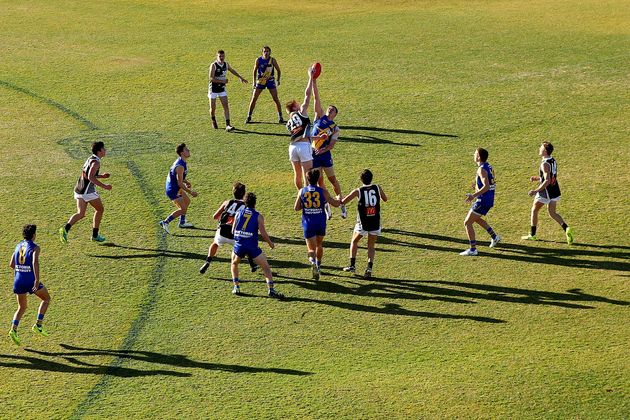
The world outside of Australia does not get to hear about Australian Rules Football very much, which is a pity as it is a very enjoyable sporting spectacle. It is also one of the only major ball playing team sports when a player cannot be removed from the field of play for violent conduct (at least at the top level), only suspended at the behest of a judiciary for a number of subsequent matches. Almost all other similar sports give match officials the ability to dismiss players, either permanently or temporarily for various misdemeanours, including acts of violence.
Back in 1925, New Zealand rugby union player Cyril Brownlie gained the dubious distinction of being the first international player to be sent from the field for “kicking an opponent”. It took another 42 years for another player to follow him down the tunnel. For most of sports history, players normally needed to unload a sub-machine gun into an opposition player before an official would take action. An attitude of “what goes on on the field, stays on the field” prevailed plus a feeling that an occasional brawl was good for the game and good for the spectators.
Whilst some may bemoan the softening of sport, the reality is that conduct on the sports field needs to reflect wider society. There are three major reasons why this has to be the case. The first is to do with increased sporting professionalism. The reality of suspended players for a professional organisation is that it cannot afford to be without its better players. The increased amount of television cameras means that those in the past who may have got away with violent acts, now have fewer places to hide.
However, of greater importance is the greater appreciation of the need to protect the heads and necks of players. Contact sports tend to provide sufficient opportunity for heads and necks to be damaged without foul play. This means that sports have to act against those who put this region of the human body at unnecessary risk. Rugby union has been at the forefront of this with tackles that may previously have not even been penalised now resulting in dismissal. In some cases, this has not been for deliberate striking but failing in the duty of care to not put the head and neck at risk. The recently retired Sam Warburton famously fell foul of this in a World Cup semi final. Contrast that with Ben Flower who threw a punch in a Superleague Grand Final gave Phil Bentham one of the more straight-forward decisions of his career. The bottom line was, the head and neck was jeopardised and it is that the sporting authorities have had to clamp down on. To not do so, has the potential to open themselves up to litigation at a later stage. The head and neck need to be seen as sacrosanct as the consequences of injury to these areas can be catastrophic.
It is the legal situation that represents the third major reason. An increasingly litigious society means that the notion of “what goes on on the field, stays on the field” can no longer be relied upon. The television cameras plus mobile phone footage mean that acts that might previously have been deemed not proven, now have greater supporting evidence. Even in amateur matches, events can now easily be recorded. An innocent person punched on a sporting field on a Saturday may lose out financially and the perpetrator perceived differently. Why should they be treated differently than someone punched outside a nightclub on the same Saturday?
In Australia, debate exists as to whether Australian Rules Football should go the same way as other sports and allow dismissals. Some feel it would be for the game’s benefit, others disagree. What is needed across all sports is a culture change. Video footage on the internet of sporting violence is seen by many as for entertainment purposes. The reality of some of the events portrayed can be much darker.
In addition to a culture of accepting sporting violence is an often perpetuated notion that officials “spoil games” by being over officious. The lack of respect shown towards officials in many sports would need another blog post to examine in and the inevitable consequence of wanting to protect players is that more dismissals means greater scrutiny placed on match officials. However, the safety of the players (regardless of sport, level, age or any other factors) needs to be paramount. Particularly where the head and neck area is concerned.
You cannot obtain a new brain or spinal cord when the existing one is broken.